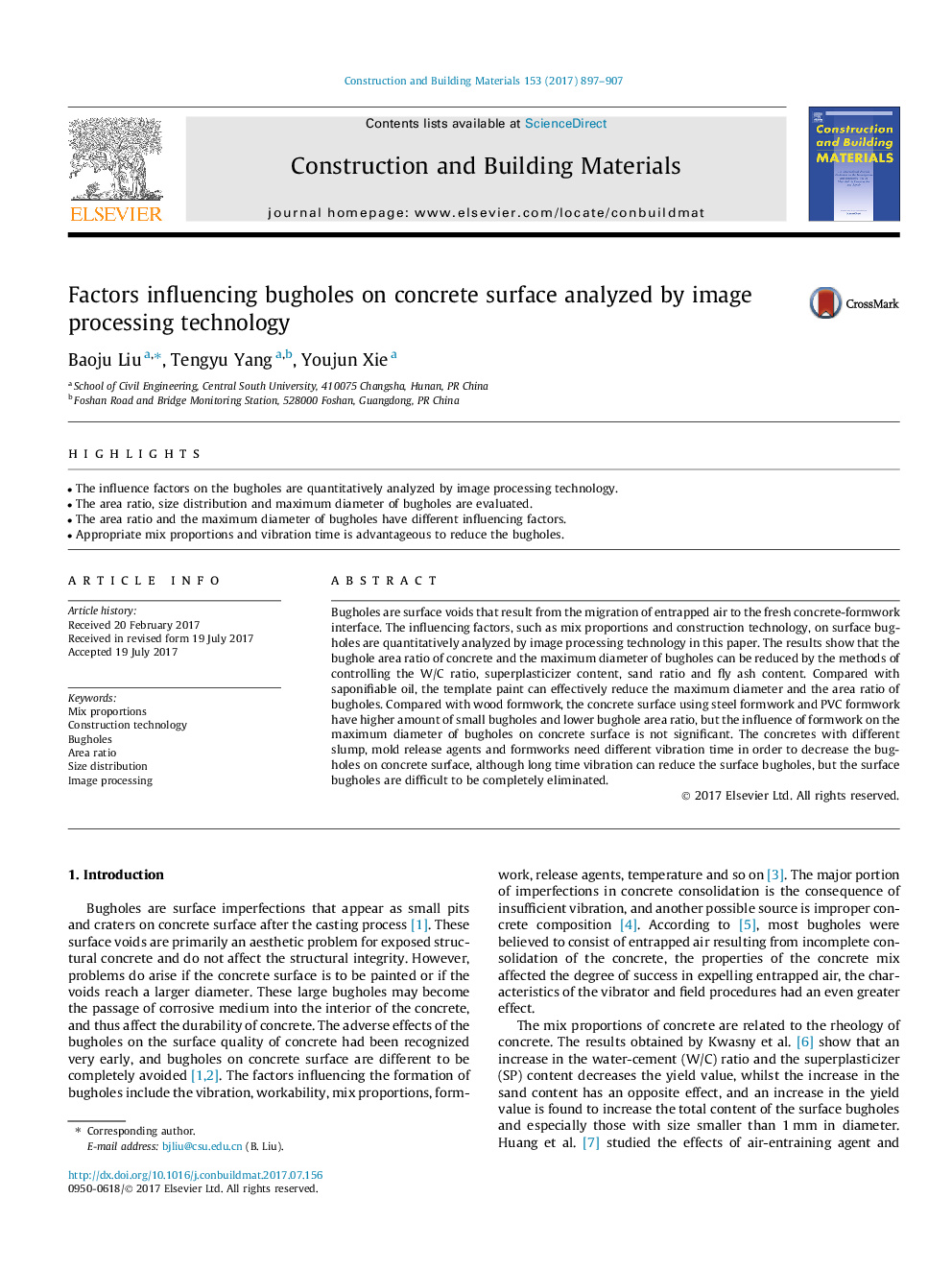| Article ID | Journal | Published Year | Pages | File Type |
|---|---|---|---|---|
| 4913032 | Construction and Building Materials | 2017 | 11 Pages |
Abstract
Bugholes are surface voids that result from the migration of entrapped air to the fresh concrete-formwork interface. The influencing factors, such as mix proportions and construction technology, on surface bugholes are quantitatively analyzed by image processing technology in this paper. The results show that the bughole area ratio of concrete and the maximum diameter of bugholes can be reduced by the methods of controlling the W/C ratio, superplasticizer content, sand ratio and fly ash content. Compared with saponifiable oil, the template paint can effectively reduce the maximum diameter and the area ratio of bugholes. Compared with wood formwork, the concrete surface using steel formwork and PVC formwork have higher amount of small bugholes and lower bughole area ratio, but the influence of formwork on the maximum diameter of bugholes on concrete surface is not significant. The concretes with different slump, mold release agents and formworks need different vibration time in order to decrease the bugholes on concrete surface, although long time vibration can reduce the surface bugholes, but the surface bugholes are difficult to be completely eliminated.
Related Topics
Physical Sciences and Engineering
Engineering
Civil and Structural Engineering
Authors
Baoju Liu, Tengyu Yang, Youjun Xie,
